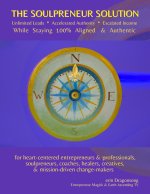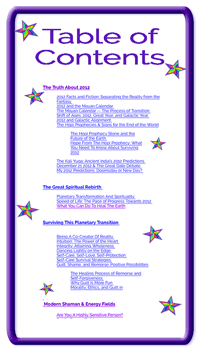Reflection Method: 5 Ways You Can Try

|
|
|
|
|
Venting "Negative" Emotions in Your Journal
It's important to understand that practicing Reflection does not mean you should stop venting in your journal. On the contrary! It's imperative to clear out those thoughts and feelings in a healthy way. In Non-Violent Communication, that kind of venting is called Jackal-talk. It's not a bad thing at all. It's a valuable way to gain information about what's going on inside of you. You don't want to dump it on other people, but it's vital to hear it for yourself. Then you'll know what to do about it. In the same way, reflective journalling is journalling first of all. Let it all out in your diary. Only then, take the higher perspective. This is the difference between denial, and true positive thinking. You face it. Then you shift how you choose to look at it. Over time, "negative" thoughts will diminish on their own, with this spiritual practice. But to repress or deny them when they are there only muddies your spiritual path, and eventually blocks it entirely. So get full value out of your journalling here's the basic reflection method:- Vent first.
- Uplift the viewpoint second.
Five Reflection Methods
Use a reflection method to turn your journalling into a powerful spiritual exercise. Here are 5 different methods you can use...- Values Lodestone
- Reframing
- Waking-Dream Interpretation
- Omnipresent "I"
- Divine Viewpoint
Values Lodestone
This reflection method is so beautiful and far-reaching, it can be used in combination with any other reflection method, or as a practice on its own. To start, it's necessary to have a written list of your values and ideals. So make a list:
What are the things that are really important to you? (These are your values.)
And what kind of person do you aim to be? (These are your ideals.)
For example, common values are: family, well-being, stability, spiritual development, etc. Common ideals are...
- kindness
- compassion
- wisdom
- honesty
- generosity
- patience
- etc.
The Gift Of This Practice:
Eventually it is second-nature to let your values and ideals guide your every word and action, and even your thoughts. It's astonishing how this one shift in perspective can turn your whole life around!Reframing Reflection Method
Reframing means stepping outside of your automatic explanation of things, and putting it in a more realistic or more positive perspective. We all have mechanical responses to things, things we tell ourselves about what happens.
"When he looks at me that way, it means he hates me."
"I know she did that on purpose to hurt me; she knows how I feel when people are late."
"What else can it mean when she looks at me like that? She thinks I'm brainless; that's the only explanation."
These stories that we tell ourselves are so habitual, and usually subconscious, that we don't feel there's any other possible interpretation.
While our interpretation may or may not be correct, it is absolutely certain that there is another version that is equally possible... and usually more so.
For instance, how a person reacts to you is not really about you. It says much more about them: their thoughts, their current emotional state, their fears, etc.
With the Reframing reflection method, you deliberately step back from a knee-jerk reaction and take another look at what might be happening.
The Gift Of This Practice:
An immediate relief from unpleasant emotions, an ability to respond more calmly and effectively, and increased optimism about life and your ability to deal with it.Waking-Dream Interpretation
Life is a waking dream. If you've ever interpreted a dream, you know that the images and events in a dream are symbolic of things of concern to you. Everything that happens in your daily life is just as much a symbol! You can interpret everyday events just as if they were dreams. The benefits?- You gain a deep insight into the real meaning and causesof what's happening to you.
- You gain a invaluable perspective on Truth: this life is a dream and a game and an initiation.
The Gift Of This Practice:
Over time, this perspective becomes your ordinary viewpoint. When that happens, nothing that life throws you, can throw you off balance. So life stops trying to throw you!Omnipresent "I"
The Omnipresent "I" reflection method is a way of practicing taking full responsibility for your life. This sounds like a good thing on the surface, but most of us resist it strenuously! Because that means we're responsible for everything that happens to us... the bad along with the good. And sometimes it’s our power for good that scares us more. Nonetheless, you can't get far on any spiritual path without this skill. Nor have any kind of empowered, successful life. So what this method does is look frankly at the situation, to discern your part in what happened. This is not to assign blame or guilt — both of which emotions are contrary to spirituality. It simply halts the victim mentality that sees us as helpless, and hopeless to change what happens.The Gift Of This Practice:
This empowers you to create your life in more accord with your desires.Divine Viewpoint
These reflections take the viewpoint of the Divine Parent, watching the games Her children play. It has both a more removed point of view — like viewing traffic from high in an airplane — and an eternal perspective — putting things in context of a whole lifetime, or even lifetimes. In other words, it reflects a broader, and more spiritual, perspective. With this method, you have an eye to the lesson or growth opportunity that is being offered. You look for the hidden gift in the problems, and rejoice in the beauty of what's going well. You can ask yourself:- What is the Divine's purpose for this to happen now?
- Am I being guided somewhere?
- What do I need to learn here?
- What service am I being asked to provide?
- What would the Goddess say about this situation?
The Gift Of This Practice:
This reflection method helps you learn to look beyond appearances, and see with more depth and insightfulness. It also really boosts your ability to find compassion, both for others and for yourself.
 Go to part 3 to see Examples of the Reflection Method, . . .
Go to part 3 to see Examples of the Reflection Method, . . .
With Brightest Blessings,
erin Dragonsong

Return from
Reflection Method
to
Spiritual Practices










